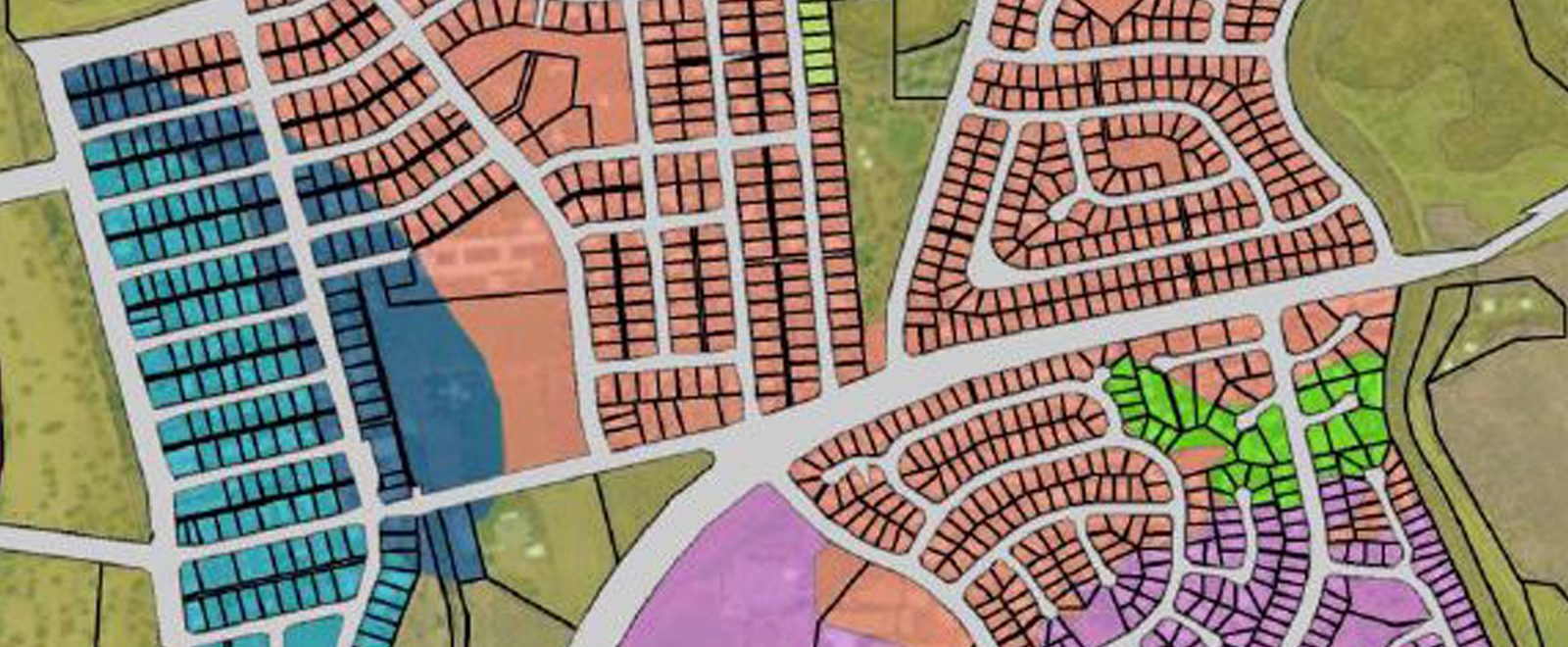Vegetation Maps

Step-by-Step instructions on how to access your property’s land unit and vegetation maps:
Step 1 – Locate Your House
Follow the links below to the maps of your property location i.e. Eastside. Locate your street and house on the vegetation type map.
- CBD [PDF 408 KB]
- Braitling [PDF 347 KB]
- The Gap ~ Desert Springs ~ Mt Johns [PDF 380 KB]
- Larapinta ~ Araluen [PDF 320 KB]
- Gillen [PDF 404 KB]
- Eastside ~ Sadadeen [PDF 390 KB]
Step 2 – Identify Your Vegetation Type
Refer to the legend, which is located on the map and identify what colour your house is in. The colours provide you with a general guide as to what the vegetation communities may have been present before housing development. For example, you may be in vegetation type 17.
Step 3 – Select The Appropriate Vegetation Species List
Follow the links below to the Alice Springs vegetation community list relevant to your property. For example, locate the list called Vegetation-17 and refer to the list of plants we recommend.
From here you can choose the plant species that you might like to plant in your Garden for Wildlife.
- Vegetation26 [PDF 55 KB]
- Vegetation25 [PDF 56 KB]
- Vegetation24 [PDF 91 KB]
- Vegetation23 [PDF 106 KB]
- Vegetation22 [PDF 104 KB]
- Vegetation21 [PDF 79 KB]
- Vegetation20 [PDF 60 KB]
- Vegetation19 [PDF 33 KB]
- Vegetation18 [PDF 85 KB]
- Vegetation17 [PDF 98 KB]
- Vegetation16 [PDF 91 KB]
- Vegetation15 [PDF 83 KB]
- Vegetation14 [PDF 62 KB]
- Vegetation13 [PDF 41 KB]
- Vegetation12 [PDF 51 KB]
- Vegetation11 [PDF 70 KB]
- Vegetation10 [PDF 75 KB]
- Vegetation09 [PDF 64 KB]
- Vegetation08 [PDF 65 KB]
- Vegetation07 [PDF 68 KB]
- Vegetation06 [PDF 114 KB]
- Vegetation05 [PDF 81 KB]
- Vegetation04 [PDF 105 KB]
- Vegetation03 [PDF 50 KB]
- Vegetation02 [PDF 105 KB]
- Vegetation01 [PDF 83 KB]
- Vegetation27 [PDF 42 KB]
Step 4 – Locate Your House (Again)
Follow the links below to the maps of your property location i.e. Eastside. Locate your street and house on the land unit map.
- Gillen [PDF 402 KB]
- Larapinta ~ Araluen [PDF 302 KB]
- The Gap ~ Desert Springs ~ Mt Johns [PDF 365 KB]
- Braitling [PDF 334 KB]
- CBD [PDF 385 KB]
- Eastside ~ Sadadeen [PDF 371 KB]
Step 5 – Identify Your Land Unit
Refer to the legend, which is located on the map and identify what colour your house is in. The colours provide you with a general guide as to what the land units are in the region. For example, you may be in land unit 5.03.
Step 6 – Learn About Your Land Unit
Follow the links below to download the individual land unit descriptions relevant to your property. This will highlight the soil descriptions surrounding and including your property location.
Alternatively, you download the full Land Resource and Capability Assessment report and search for the land unit relevant to your property. Each description is two pages and can be printed double-sided.
- 4.07 [PDF 819 KB]
- 5.14 [PDF 865 KB]
- 1.01 [PDF 832 KB]
- 1.02 [PDF 837 KB]
- 1.03 [PDF 829 KB]
- 1.04 [PDF 846 KB]
- 1.05 [PDF 829 KB]
- 1.06 [PDF 833 KB]
- 1.07 [PDF 848 KB]
- 1.08 [PDF 842 KB]
- 1.09 [PDF 848 KB]
- 1.10 [PDF 862 KB]
- 1.11 [PDF 850 KB]
- 1.12 [PDF 949 KB]
- 1.13 [PDF 842 KB]
- 1.14 [PDF 943 KB]
- 1.15 [PDF 842 KB]
- 1.16 [PDF 834 KB]
- 1.17 [PDF 854 KB]
- 1.18 [PDF 941 KB]
- 1.19 [PDF 818 KB]
- 2.01 [PDF 952 KB]
- 2.02 [PDF 924 KB]
- 2.03 [PDF 948 KB]
- 2.04 [PDF 846 KB]
- 2.05 [PDF 843 KB]
- 2.06 [PDF 843 KB]
- 2.07 [PDF 955 KB]
- 2.08 [PDF 835 KB]
- 2.09 [PDF 845 KB]
- 2.10 [PDF 924 KB]
- 2.11 [PDF 949 KB]
- 2.12 [PDF 932 KB]
- 2.13 [PDF 823 KB]
- 3.01 [PDF 972 KB]
- 3.02 [PDF 978 KB]
- 3.03 [PDF 933 KB]
- 3.04 [PDF 871 KB]
- 3.05 [PDF 949 KB]
- 3.06 [PDF 822 KB]
- 3.07 [PDF 942 KB]
- 3.08 [PDF 842 KB]
- 3.09 [PDF 821 KB]
- 3.10 [PDF 949 KB]
- 3.11 [PDF 839 KB]
- 3.12 [PDF 846 KB]
- 3.13 [PDF 959 KB]
- 3.14 [PDF 760 KB]
- 3.15 [PDF 763 KB]
- 3.16 [PDF 767 KB]
- 3.17 [PDF 763 KB]
- 4.01 [PDF 757 KB]
- 4.02 [PDF 760 KB]
- 4.03 [PDF 757 KB]
- 4.04 [PDF 864 KB]
- 4.05 [PDF 829 KB]
- 4.06 [PDF 759 KB]
- 4.08 [PDF 760 KB]
- 4.09 [PDF 864 KB]
- 4.10 [PDF 763 KB]
- 4.11 [PDF 763 KB]
- 4.12 [PDF 866 KB]
- 4.13 [PDF 864 KB]
- 5.01 [PDF 763 KB]
- 5.02 [PDF 761 KB]
- 5.03 [PDF 863 KB]
- 5.04 [PDF 764 KB]
- 5.05 [PDF 863 KB]
- 5.06 [PDF 868 KB]
- 5.07 [PDF 868 KB]
- 5.08 [PDF 761 KB]
- 5.09 [PDF 867 KB]
- 5.10 [PDF 865 KB]
- 5.11 [PDF 758 KB]
- 5.12 [PDF 763 KB]
- 5.13 [PDF 865 KB]
We thank Dave Albrecht for allowing us access to the vegetation community lists and Ruddy Lennartz for allowing us to develop the suburban land and vegetation types for Alice Springs from the Land Resources of Alice Springs Area Map
A great deal of time has gone into developing the original vegetation community maps and vegetation lists. Many thanks to Sarah Wilson, Tim Collins and Sunil Dhanji.
The vegetation maps and land unit maps have been updated by Land for Wildlife (2017) using ArcGIS software.